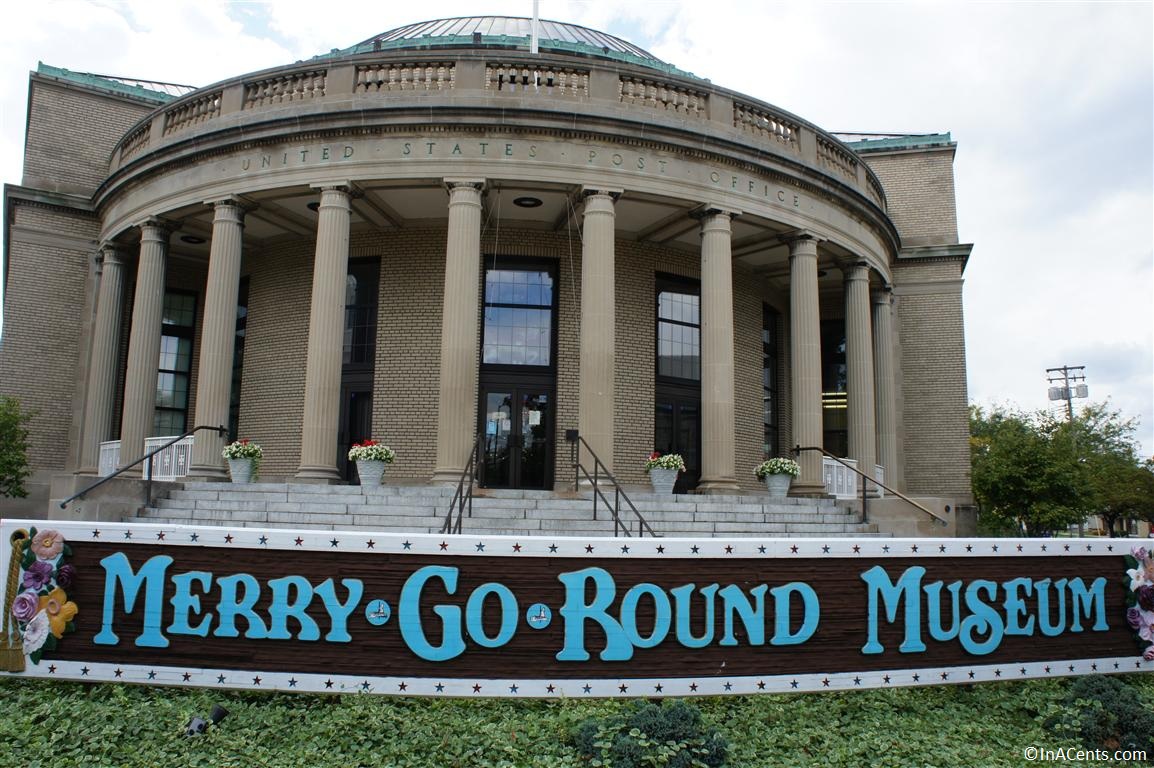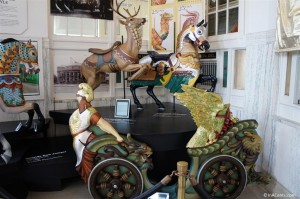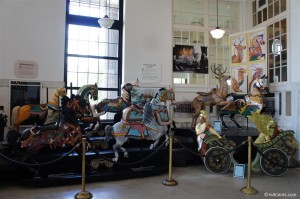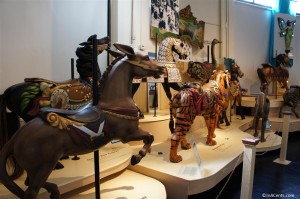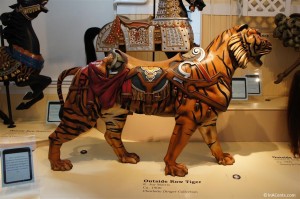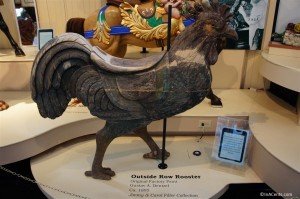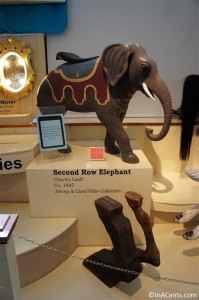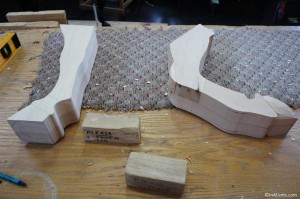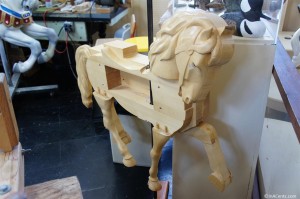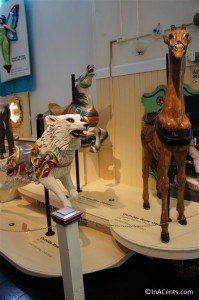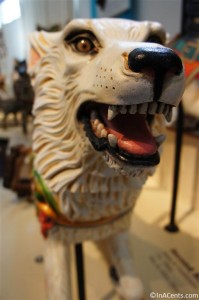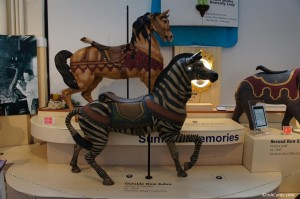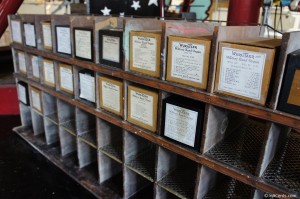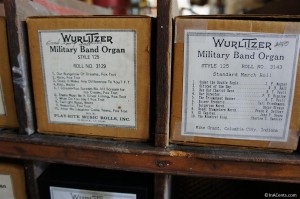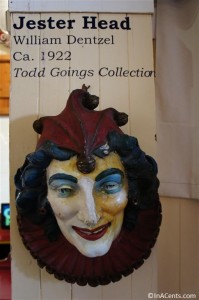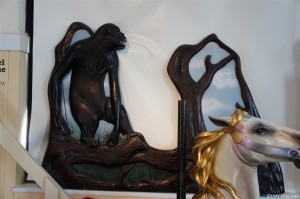While most people head to Sandusky, Ohio to visit Cedar Point, a couple years ago our family decided to visit the Merry-Go-Round Museum instead. We were recently invited back, thanks to fellow blogger The Traveling Praters.
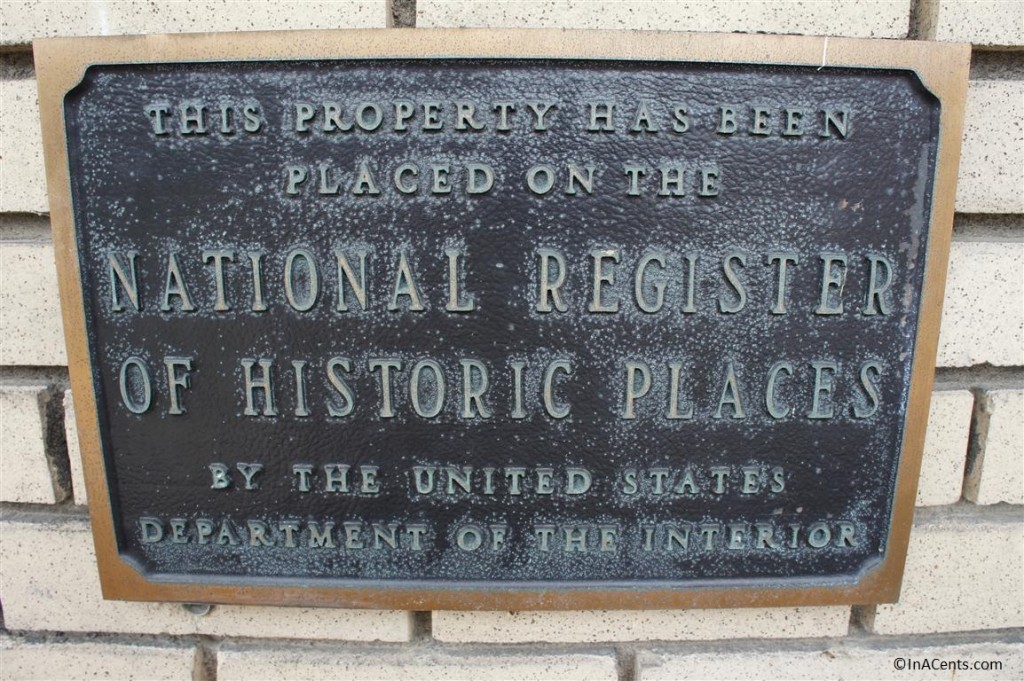
The museum is situated in an old United States Post Office, located in downtown Sandusky (301 Jackson Street, Sandusky, Ohio 44824). The building was constructed in the 1920’s, and remained a Post Office until 1986. The building is one of only two known Post Office buildings constructed with a round rotunda.
In 1988, with the release of the U.S. carousel stamps (seen pictured in the background), there was to be a small gathering of guests along with the showing of the animals used for each stamp. It was expected that a couple hundred people would show. In reality, over 2,000 people showed up, causing the inspiration for museum.
If you look directly below the stamps, you will see two of the original figures used for the creation of the postage stamps.
The Merry-Go-Round Museum rotates their displays every two years. The current theme is “Grab the Brass Ring” and most of the animals on display are outside row standers. In the old days of carousels, guests used to ride the outside row of animals and reach for a ring. The goal was to retrieve the one brass ring, which could be turned in for a prize, typically a free ride. Often times, carousel operators would also have a target for guests to toss the ring into, to help retrieve the rings.
The current theme runs until December 2013.
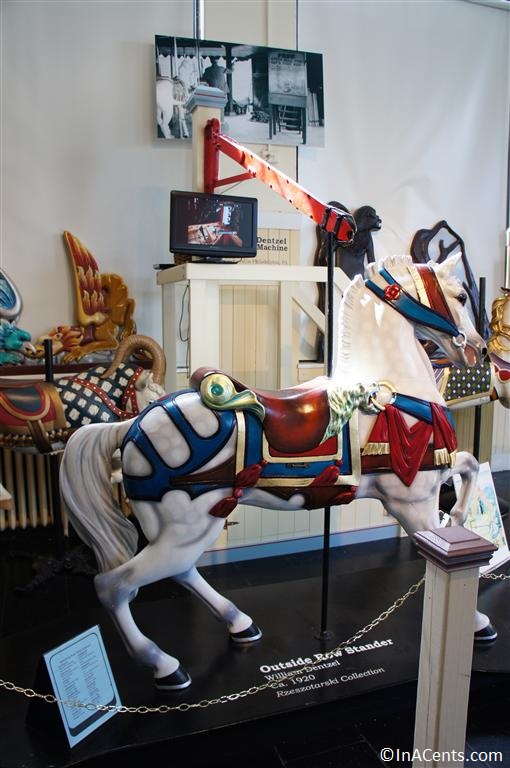
1904 William Dentzel Brass Ring Machine Displayed with a 1920 Dentzel Stander Horse
There are three main styles of horses used in traditional carousels, Philadelphia, Coney, and Country Fair styles.
Philadelphia style horses were very realistic looking, and often fairly large to mimic their real counterparts.
Country Fair style horses were often smaller by nature of their use. These fixtures were used to travel around the country from fair to fair, so were smaller to help in the transportation and storage issues. Country Fair animals were often very plain in style.
Coney style animals were the most elaborately decorated animals, with lots of jewels, flowers, and decorations.
Typically, only the outside facing side of the animals are emblazoned with jewels, also known as the “Romance side.” This is because people only see the animals from the outside.
While I did not get a picture of them, there was animals from British carousels that faced the opposite direction as those on American carousels. Just like driving on the opposite side of the road, in other parts of the world, merry-go-rounds may spin the opposite direction.
We also learned about why there was a Lead Horse on the carousels, traditionally an armored horse. Again, back in the old days, guests used to pay to use each ride. By having a lead horse, the operator knew where to begin the new ride.
Most of the items on display in the Merry-Go-Round Museum are on loan from their private owners. Lots of the animals have been restored over the years, with a couple still carrying their original paint.
The Rooster, in the above photos, was discovered out in a field after being used for years as a bow and arrow target practice. She was constructed in 1895, and still has some of his original paint. However, you can see where the restores have had to replace some of the wood due to its wear.
The animals used in carousels are constructed of wood boards that are glued together. Screws and nails are not used in the construction, and the animals are not constructed from a solid block of wood. Parts (legs, head, or body) are created from boards glued together, sanded, and cut using a band saw. Once they retain their approximate shape, carvers that use specialized tools to create the elaborate details. It is only in the final stages of production that the pieces are assembled together, and finalized with paint.
There are also cast aluminum or fiberglass fixtures from mass production, but I do not believe any were on display at the museum.
The Merry-Go-Round Museum has volunteers that work relentlessly to not only restore old carousel details, but also creating new ones for various occasions. The Wolf, pictured below, was created in 2011 for a private collector.
The Giraffe, pictured above in the upper left, was discovered in a store window after 60 years. She is still in excellent condition along with her original paint from 1910.
I particularly liked the reproduction giraffe (pictured upper right corner) because it was detailed with a snake around its neck and a leopard under the rear saddle.
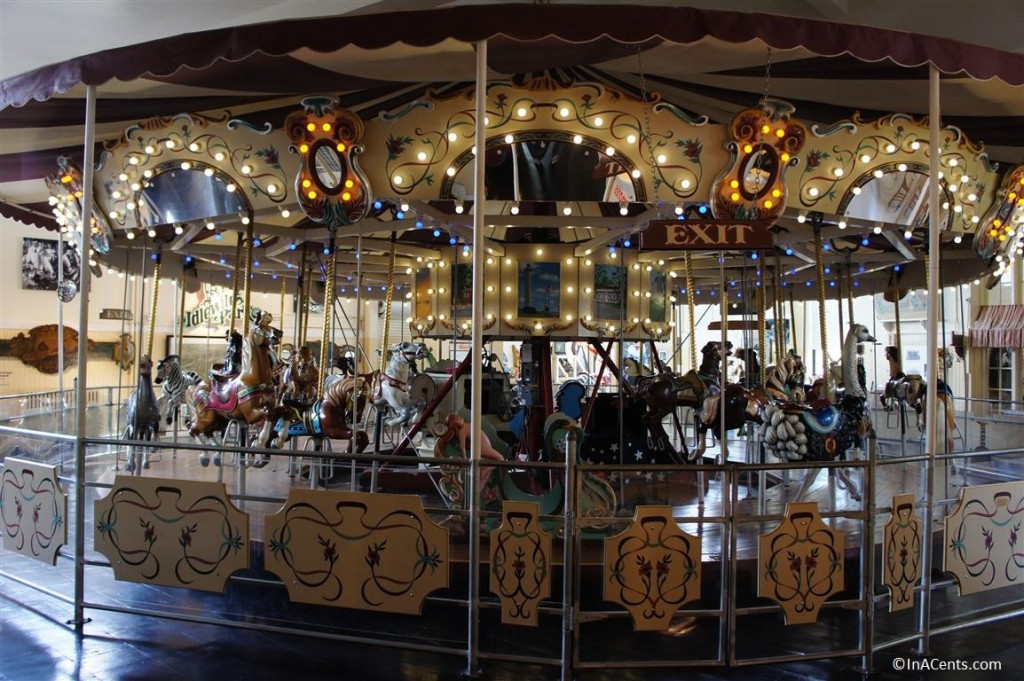
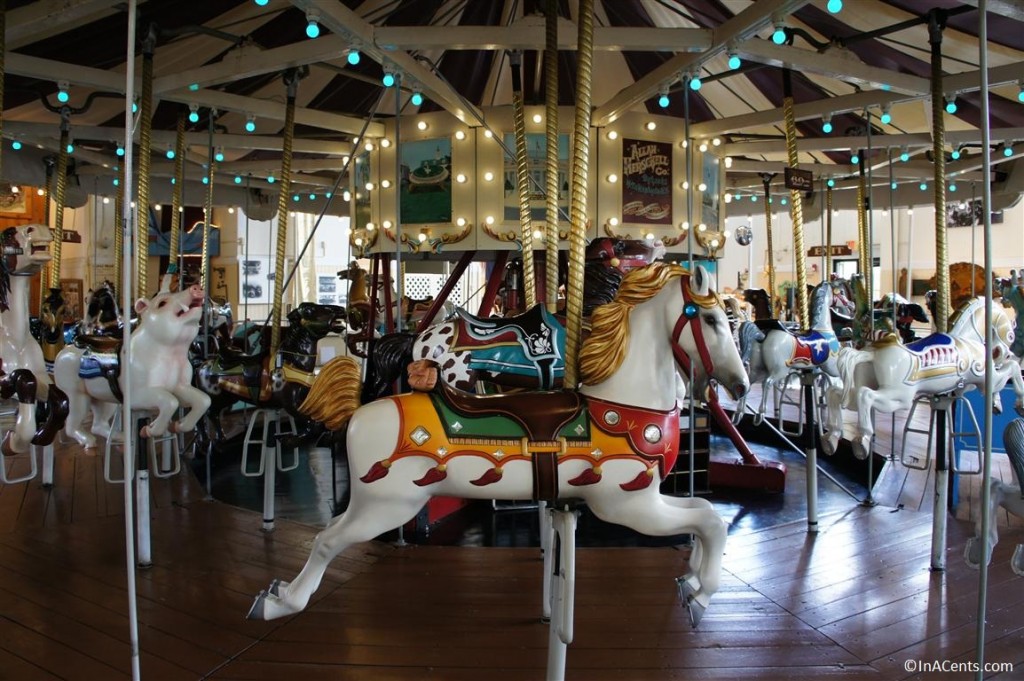
The main attraction is the Allen Herschell 1939 operating carousel in the main gallery. It was brought to the museum in 1991, without any animals and in need of refurbishment. The entire structure was rebuilt and refinished. The animals are either from the permanent collection of the museum, on loan, or were crafted in house.
The Hershell carousel was originally a traveling merry-go-round with three rows.
Guests receive a token to ride the carousel with each paid admission. The nice thing was we visited during a Saturday afternoon, and had the entire museum to ourselves, allowing the boys to practically ride for as long as they liked.
The carousel music was great, and suitable for the fall like climate outside in late September. They had chosen a Halloween style reel of music for the merry-go-round, and the boys and I went round and round to the Ghostbusters theme music.
For our northern fans, the two horses in the above, bottom left photo, were from Canadian carousels, although not constructed in Canada.
On a related Disney note, we learned that animals from the Disney carousels are typically carved and sent to the Walt Disney Company unfinished. Disney Imagineers than handle all of the paintwork associated with the animals.
The museum only take about an hour to go through, hear the tour, and ride the carousel. In addition, the museum is perfectly priced for a great affordable, family friendly stop. I was so glad we got to visit the Merry-Go-Round Museum again, this time in much more detail than before.
Save Money, Travel More!



